Introduction to Carbon Fiber in Automotive Applications
What Makes Carbon Fiber Essential in Modern Vehicle Design?
-
Carbon fiber is a lightweight yet incredibly strong material that has revolutionized automotive design, particularly in performance and motorsports applications.
-
Initially developed for aerospace and military use, carbon fiber has become a go-to material for weight reduction, strength, and aesthetics in high-performance and luxury vehicles.
-
It is commonly used for body panels, aerodynamic components, interior trims, and structural reinforcements.
Why Material Selection Matters: Balancing Performance, Aesthetics, and Cost
-
Performance Benefits: Carbon fiber’s strength-to-weight ratio surpasses traditional materials like steel and aluminum, reducing vehicle weight and improving speed, fuel efficiency, and handling.
-
Aesthetic Appeal: The unique woven patterns and finishes of carbon fiber give vehicles a high-end, aggressive look, making it a popular choice for both OEM and aftermarket customization.
-
Cost Considerations: While carbon fiber offers unparalleled benefits, different types vary in price, manufacturing complexity, and durability. Choosing the right type can impact the overall investment in a build.
What Factors Define Carbon Fiber’s Strength, Durability, and Value?
Weave Pattern
-
The structural integrity and visual appeal of carbon fiber depend heavily on the weave pattern, influencing both flexibility and rigidity.
-
Different weaves offer varying levels of strength, appearance, and application-specific advantages.
Strength and Durability
-
Carbon fiber is known for its high tensile strength, but different production methods and resin applications affect its resistance to impact, bending, and long-term wear.
-
Understanding how different types compare in strength is crucial for selecting the right material for high-stress applications.
Weight and Efficiency
-
One of the biggest advantages of carbon fiber is its ability to provide exceptional strength at a fraction of the weight of traditional metals.
-
Different types of carbon fiber composites vary in weight savings, making material selection important for performance-oriented builds.
Manufacturing Process
-
The way carbon fiber is made—whether through traditional woven processes, forged techniques, or hybrid combinations—affects its cost, strength, and ease of application.
-
Manufacturing differences also determine whether the material is suitable for structural reinforcement, body panels, or purely aesthetic modifications.
Cost and Accessibility
-
High-end carbon fiber, such as prepreg dry carbon, offers superior strength and lower weight but comes at a premium price.
-
More affordable alternatives, like wet-lay carbon fiber, offer similar aesthetics but with reduced durability and increased weight.
-
Weighing cost against benefits is essential for determining the best option for any given build or application.
The Science Behind Carbon Fiber: Understanding Its Strength and Manufacturing Process
How Is Carbon Fiber Made? From Raw Material to High-Performance Composite
Carbon fiber production is a complex process that transforms raw materials into a high-strength, lightweight composite used in automotive, aerospace, and industrial applications.
Raw Materials and Fiber Formation
-
Carbon fiber starts as a polymer-based material, typically polyacrylonitrile (PAN), though rayon and petroleum pitch can also be used.
-
The PAN fibers are subjected to high-temperature treatment in an oxygen-free environment, a process called carbonization, which removes non-carbon elements and strengthens the fibers.
-
The result is extremely thin filaments, about 5 to 10 microns in diameter, which are bundled together to form tows (groups of filaments used in weaving or molding).
How Do Weave Patterns Affect Strength and Flexibility?
-
The carbon fiber filaments are woven into fabric sheets or combined into non-woven structures, depending on the application.
-
Different weaving techniques impact the fiber’s rigidity, flexibility, and aesthetic appeal, which is why various patterns exist in automotive applications.
Resin Impregnation and Composite Formation
-
To create a usable composite, carbon fiber sheets must be combined with resin, which binds the fibers together and determines the final product's strength, weight, and durability.
-
This combination of carbon fiber and resin is what makes carbon fiber-reinforced plastic (CFRP), the material used in vehicle components.
Comprehensive Comparison of Carbon Fiber Types
Is 2x2 Twill Weave Carbon Fiber the Best for Strength, Style, and Versatility?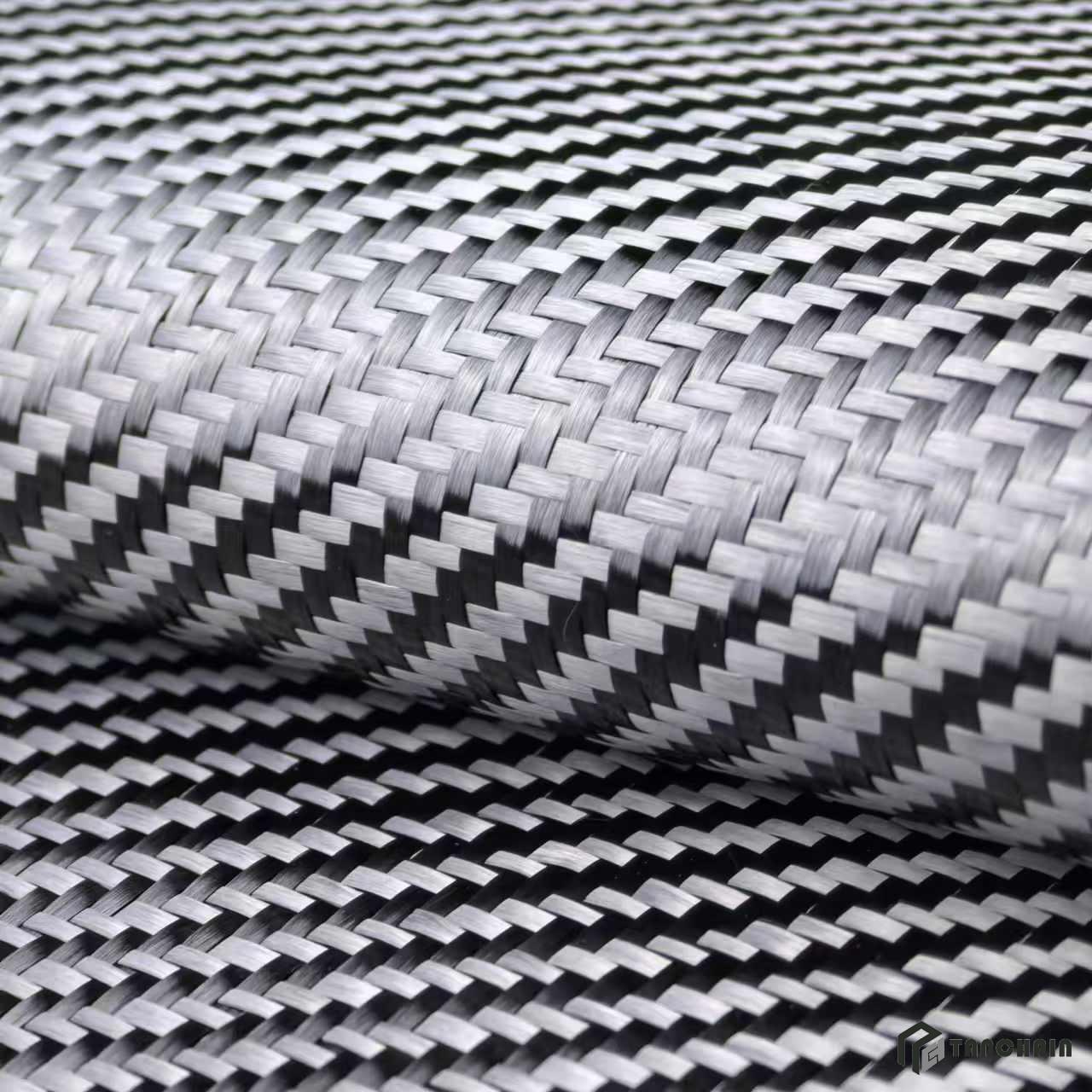
Structural Composition and Weave Pattern
-
Features a diagonal weave pattern, where two fibers run over and two run under, creating a structured and uniform appearance.
-
The twill weave enhances flexibility while maintaining high tensile strength, making it ideal for applications requiring a balance of rigidity and adaptability.
-
Available in glossy or matte finishes, with gloss offering a deep, high-shine appearance and matte providing a more understated, modern aesthetic.
Manufacturing Process and How It Affects Rigidity
-
Manufactured using prepreg (dry carbon) or traditional wet-lay carbon, depending on cost and application requirements.
-
The twill weave allows for some flexibility while maintaining high directional strength, making it stronger than forged carbon in load-bearing applications.
-
Resin content and curing method (autoclave vs. vacuum bag) significantly influence final rigidity, weight, and durability.
Strength-to-Weight Ratio Compared to Other Carbon Fiber Types
-
Higher tensile strength than forged carbon, as the continuous fiber strands reinforce the material in multiple directions.
-
Better rigidity and structural integrity, making it the preferred choice for chassis components, aerodynamic elements, and structural reinforcements.
-
Weight is low compared to fiberglass or aluminum, and comparable to or lighter than forged carbon, depending on resin application.
Common Automotive Applications
-
Used in body panels, hoods, trunks, splitters, side skirts, and interior components.
-
Frequently seen in OEM and aftermarket performance applications, including chassis reinforcement, aerodynamic upgrades, and engine bay components.
-
Preferred in motorsports and high-performance street cars where strength and weight savings are critical.
Pros and Cons in Terms of Cost, Durability, and Aesthetics
Pros:
-
Higher tensile strength and rigidity than forged carbon, making it better for structural applications.
-
Classic, high-performance carbon fiber look, recognized across the industry.
-
Good balance of strength and flexibility, allowing for a variety of uses.
-
Available in both gloss and matte finishes, catering to different design preferences.
-
Moderate cost compared to forged carbon, making it accessible for many enthusiasts and builders.
Cons:
-
Less impact-resistant than forged carbon, meaning it may crack under extreme stress or collision forces.
-
More rigid but less adaptable to complex shapes, requiring precise molding for fitment.
-
Common in the industry, so it lacks the uniqueness of more exotic carbon fiber variations.
What Is Forged Carbon Fiber? Aesthetic Appeal vs. Performance Trade-offs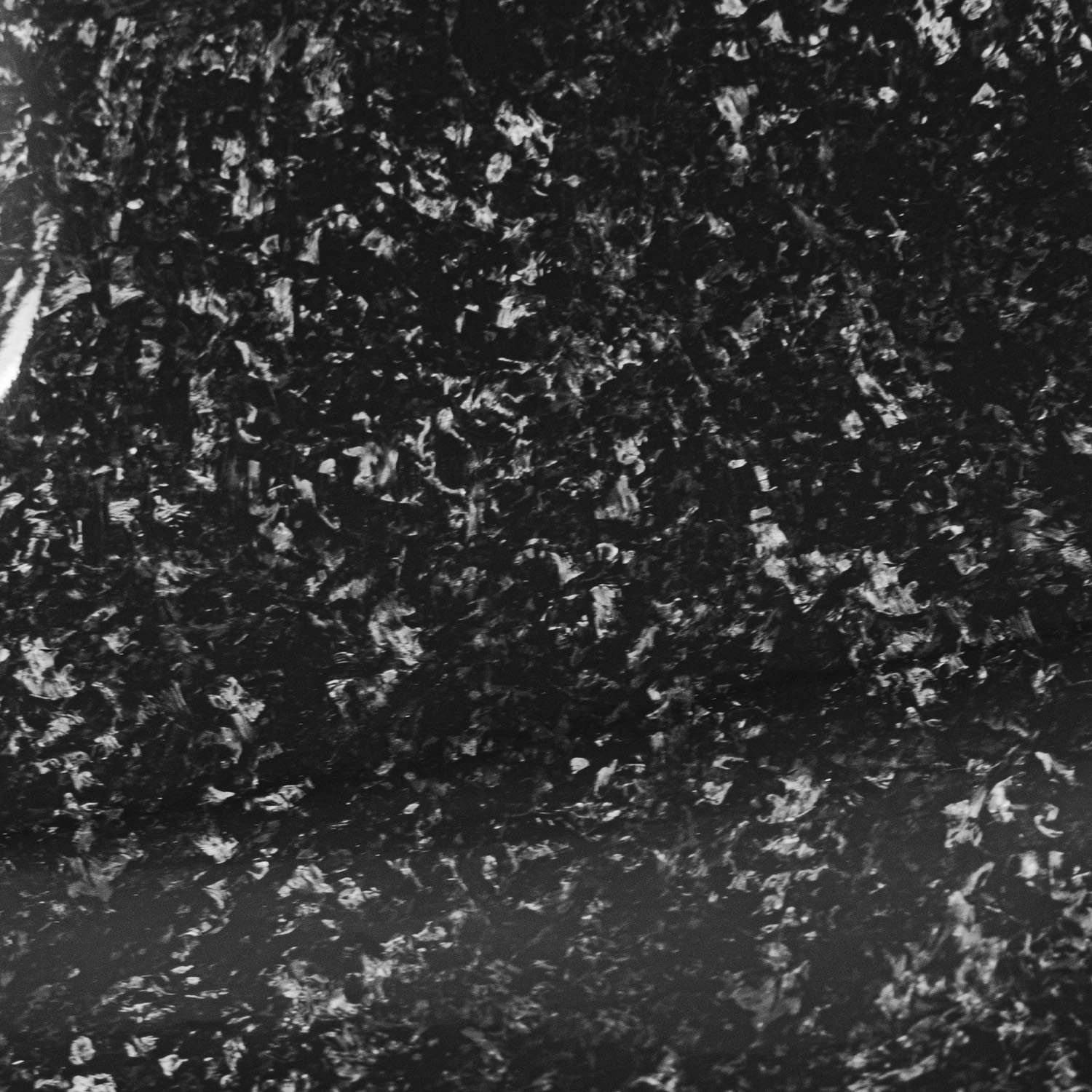
Manufacturing Process and Key Differences from Woven Carbon Fiber
-
Made by compressing chopped carbon fiber strands with resin in a high-pressure mold, rather than weaving continuous fibers.
-
Uses prepreg technology, ensuring even resin distribution and strong internal bonding.
-
The random orientation of fibers eliminates weak points in specific directions, creating high impact resistance but lower overall rigidity compared to woven carbon fiber.
Strength Properties and Resistance to Impact
-
More impact-resistant than woven carbon fiber, dispersing force across multiple fiber orientations.
-
Lower tensile strength and rigidity compared to twill weave, making it unsuitable for load-bearing structural components.
-
Ideal for cosmetic and non-structural parts where toughness and durability matter more than stiffness.
Aesthetic Appeal and Customization Potential
-
The marbled, random fiber pattern creates a modern, high-tech aesthetic distinct from traditional woven carbon fiber.
-
Due to its unique fabrication, each piece has a slightly different pattern, adding to its exclusivity.
-
Available in matte and gloss finishes, with matte being more common for a raw, performance-focused look.
Weight Comparison with Other Carbon Fiber Types
-
Lighter than standard wet-lay carbon fiber but not necessarily lighter than prepreg 2x2 twill carbon.
-
Weight savings depend on resin content and compression efficiency during manufacturing.
Applications in Motorsports, Luxury Cars, and Aftermarket Parts
-
Used in supercars, hypercars, and high-end performance vehicles, including Lamborghini, McLaren, and Pagani applications.
-
Common in steering wheels, mirror caps, aero parts, and interior trim panels due to its distinctive aesthetic.
-
Found in impact-prone areas where toughness is prioritized over rigidity, such as door sills and interior panels.
Pros and Cons Regarding Cost, Rigidity, and Ease of Use
Pros:
-
Superior impact resistance compared to woven carbon fiber, reducing the risk of cracking.
-
Visually unique appearance, making it stand out in high-end custom builds.
-
Lower manufacturing waste, which can sometimes lower costs for large-scale production.
Cons:
-
Lower tensile strength and rigidity than twill carbon, making it unsuitable for structural applications.
-
More expensive than traditional woven carbon fiber, especially for custom applications.
-
More resin-heavy than woven carbon, which can sometimes increase weight if not manufactured efficiently.
When Should You Use Carbon Kevlar Hybrid? Best Applications for High-Impact Protection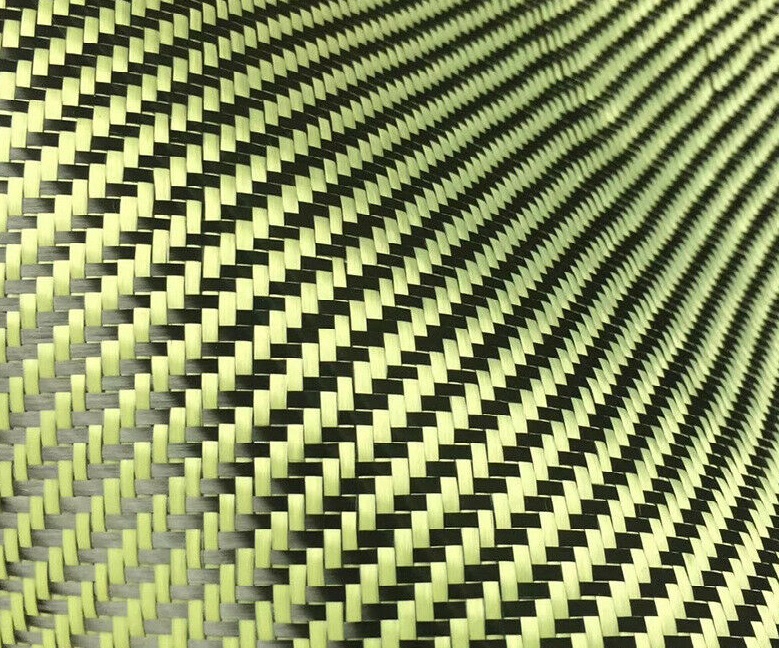
Composition: Blending Carbon Fiber with Kevlar Fibers
-
A hybrid material combining carbon fiber’s strength with Kevlar’s impact resistance.
-
Typically features alternating layers of carbon fiber and Kevlar or woven Kevlar strands integrated into the carbon fiber fabric.
Strength and Impact Resistance Advantages
-
More resistant to cracking or shattering under impact compared to pure carbon fiber.
-
Increased flexibility, making it ideal for applications that require some give rather than extreme rigidity.
-
Retains lightweight properties while adding improved abrasion resistance.
Weight Considerations Compared to Pure Carbon Fiber
-
Slightly heavier than traditional carbon fiber, but the weight increase is minimal compared to the added benefits in durability.
-
Provides a middle ground between carbon fiber’s rigidity and Kevlar’s toughness.
Color Variations and Aesthetic Appeal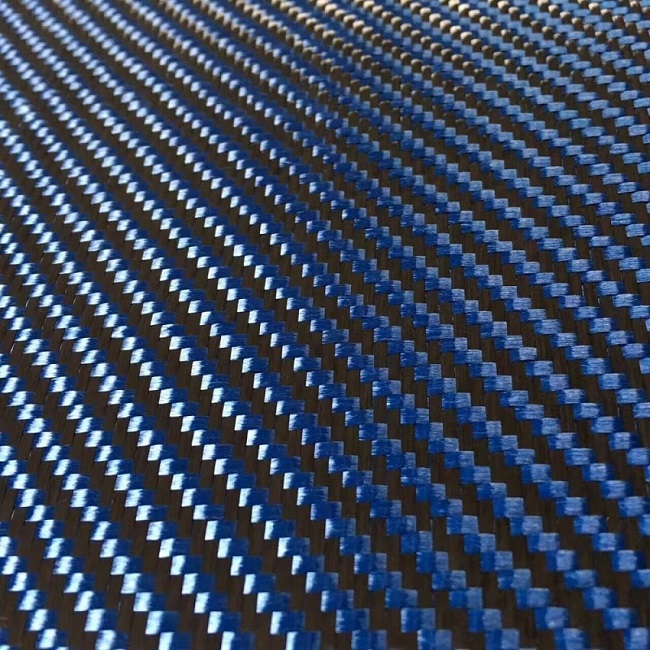
-
Often available in distinctive color combinations such as black and gold, black and red, or black and blue due to Kevlar’s natural color.
-
Used in custom and racing applications for both aesthetic appeal and function.
Common Uses in Automotive and Motorsports Applications
-
Found in high-impact areas such as underbody protection, wheel wells, and reinforced panels.
-
Frequently used in motorcycle and off-road racing applications where durability is crucial.
-
Sometimes used in seats, door panels, and other interior applications for an aggressive, high-performance look.
Pros and Cons Regarding Cost, Flexibility, and Wear Resistance
Pros:
-
Higher impact resistance than pure carbon fiber.
-
Distinctive aesthetic appeal with color options.
-
More flexibility than rigid carbon fiber weaves.
Cons:
-
Slightly heavier than standard carbon fiber.
-
More expensive than traditional woven carbon fiber due to the combination of materials.
-
Limited availability in mainstream aftermarket applications.
Are There Other Carbon Fiber Weaves? Exploring Plain Weave, Honeycomb, and More
Plain Weave Carbon Fiber (1x1)
-
Simplest weave pattern, with fibers woven in a basic over-under structure.
-
More rigid than twill weave but less flexible, making it ideal for flat or simple surfaces.
-
Lower cost, but less visually dynamic compared to twill or forged carbon.
4x4 and Other Twill Weaves
-
Similar to 2x2 twill but with larger gaps between weave strands, providing increased flexibility.
-
Used in applications where curved surfaces require more adaptability.
Honeycomb Carbon Fiber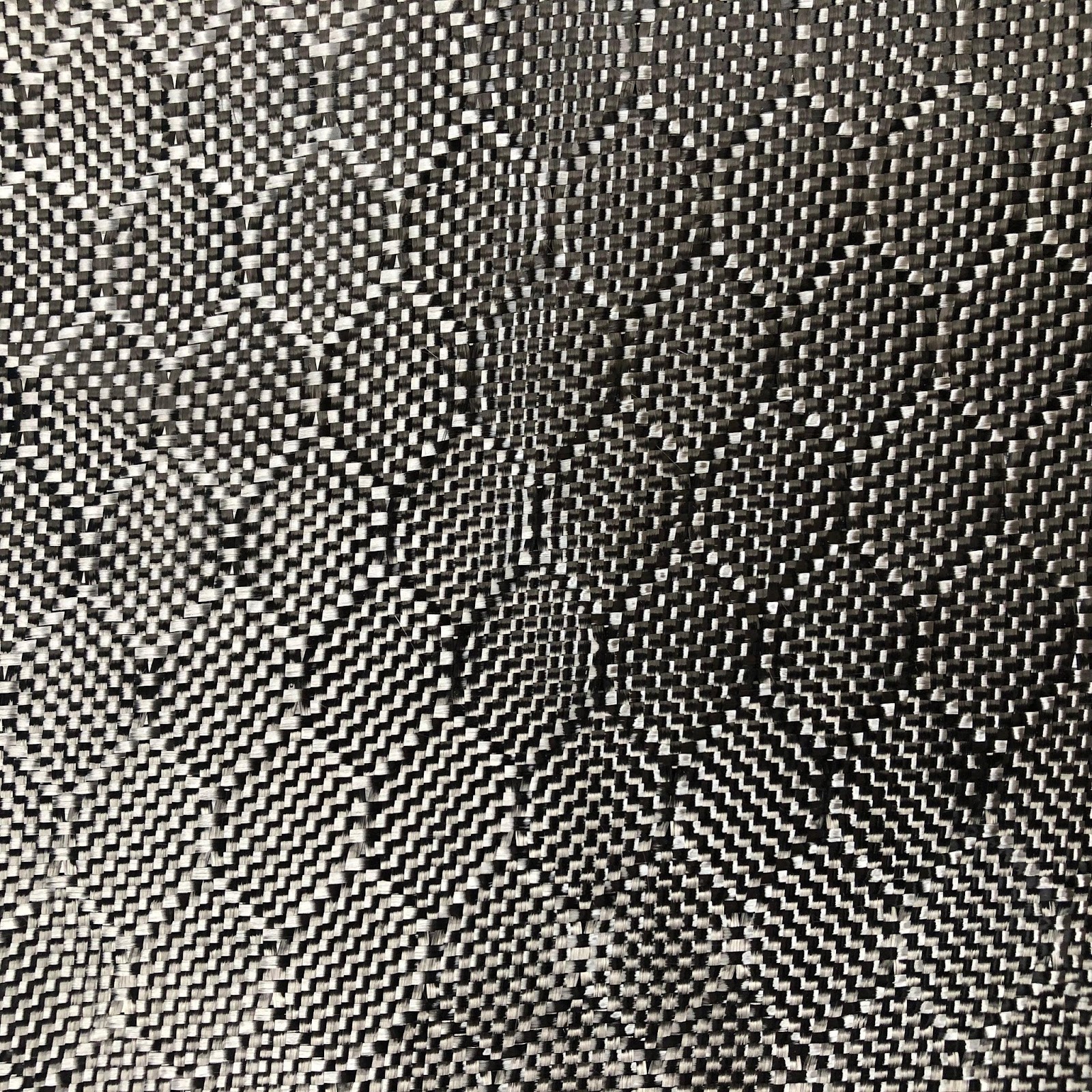
-
Features a lightweight core structure sandwiched between layers of carbon fiber, providing exceptional strength without excess weight.
-
Used in structural applications, aerospace, and high-end motorsports components.
Key Factors to Consider When Choosing Carbon Fiber
Which Carbon Fiber Type Offers the Best Strength & Durability for Structural Integrity?
-
2x2 Twill Weave Carbon Fiber: Offers high tensile strength and rigidity, making it the best choice for structural applications like body panels, chassis reinforcements, and aerodynamic components.
-
Forged Carbon Fiber: Provides high impact resistance due to its randomly oriented fibers but lacks the directional strength and rigidity of woven carbon fiber, making it better suited for cosmetic and non-load-bearing applications.
-
Carbon Kevlar Hybrid: Excellent for impact-prone areas, as Kevlar enhances abrasion resistance and toughness while maintaining relatively low weight. Ideal for underbody protection, wheel wells, and reinforced areas.
Factors That Impact Durability
-
Resin Content: Higher-quality manufacturing processes ensure even resin distribution, improving long-term durability and preventing delamination.
-
Curing Method: Autoclave-cured carbon fiber is significantly stronger than vacuum-bagged or wet-lay alternatives.
-
Exposure to Elements: Carbon fiber is resistant to corrosion but can degrade under UV exposure if not properly coated, making a UV-resistant clear coat essential for long-term durability.
How Much Weight Can Carbon Fiber Save? Finding the Best Option for Performance & Efficiency
-
2x2 Twill Weave Carbon Fiber: Lightweight and strong, making it a great balance between weight reduction and rigidity.
-
Forged Carbon Fiber: Lighter than standard wet-lay carbon, but often resin-heavy, which can increase weight depending on manufacturing quality.
-
Carbon Kevlar Hybrid: Slightly heavier than pure carbon fiber but provides additional impact protection, making it a trade-off between weight and durability.
Why Weight Reduction Matters
-
Lower weight improves acceleration, handling, and braking performance.
-
Weight distribution is critical in performance builds, and lighter materials improve overall balance and efficiency.
-
Structural components benefit most from lighter materials, reducing unnecessary stress on supporting parts.
Which Carbon Fiber Style Matches Your Build? Aesthetic Considerations for Street & Race Cars
-
2x2 Twill Weave Carbon Fiber: The classic, recognizable carbon fiber pattern with a sleek, high-performance look.
-
Forged Carbon Fiber: Provides a unique, marbled appearance, often used in supercars and custom builds for a modern, high-tech aesthetic.
-
Carbon Kevlar Hybrid: Features woven patterns with color variations, such as black and gold, black and red, or black and blue, giving it a distinctive and aggressive appearance.
-
Gloss vs. Matte Finishes:
-
Gloss finish enhances depth and shine, commonly seen on exterior body parts and dress-up components.
-
Matte finish provides a stealthy, understated look, often preferred for interior trims and high-performance builds.
Best Applications for Aesthetic Impact
-
Classic twill weave is best for timeless, high-end styling.
-
Forged carbon is ideal for custom, high-tech aesthetics.
-
Carbon Kevlar adds a unique color contrast, making it popular in motorsports and aggressive builds.
Why Is Carbon Fiber So Expensive? Cost & Availability Explained
-
2x2 Twill Weave Carbon Fiber: The most widely available and cost-effective option due to its mass production and versatility.
-
Forged Carbon Fiber: More expensive than twill weave due to its complex manufacturing process, but availability is increasing as more companies adopt it.
-
Carbon Kevlar Hybrid: Less common and typically more expensive, as it involves blending two materials, increasing production costs.
Factors That Affect Carbon Fiber Pricing
-
Production complexity: The more intricate the weave and curing process, the higher the cost.
-
Raw material availability: Kevlar-infused carbon fibers have higher material costs than standard woven carbon fiber.
-
Market demand: Twill weave is widely produced, making it the most affordable option, whereas forged carbon and Kevlar hybrids are more specialized, increasing their price.
What’s the Best Carbon Fiber for DIY vs. Professional Installation?
-
2x2 Twill Weave Carbon Fiber: Easiest to work with due to consistent fiber direction and flexibility, making it suitable for DIY installations and pre-fabricated parts.
-
Forged Carbon Fiber: Harder to shape and modify post-production, requiring precision manufacturing and professional installation.
-
Carbon Kevlar Hybrid: More challenging to cut and shape, as Kevlar fibers are abrasion-resistant, making trimming and drilling difficult without specialized tools.
Best Choices for DIY Projects
-
Twill weave carbon fiber panels and pre-cut parts.
-
Forged carbon for direct bolt-on components like trim pieces and mirror caps.
When to Opt for Professional Installation
-
If modifying or cutting carbon Kevlar (due to Kevlar’s fiber strength).
-
If achieving a seamless, high-quality finish is a priority.
Performance vs. Street Use: How Do You Choose the Right Carbon Fiber?
-
2x2 Twill Weave Carbon Fiber: Best for high-performance builds, chassis reinforcements, and aero components.
-
Forged Carbon Fiber: More suitable for show builds, luxury cars, and cosmetic applications rather than structural use.
-
Carbon Kevlar Hybrid: Ideal for race cars, off-road vehicles, and high-impact applications where durability is critical.
Key Considerations for Performance vs. Aesthetics
-
Street builds focus more on aesthetics, cost, and ease of installation.
-
Race cars require superior strength-to-weight ratios and impact resistance.
-
Luxury builds prioritize unique materials like forged carbon for exclusivity.
Best Carbon Fiber Choices by Application
|
Application |
Best Carbon Fiber Type |
|
Chassis Reinforcements |
2x2 Twill |
|
Aero Components |
2x2 Twill |
|
Cosmetic Interior Trim |
Forged Carbon, Twill Weave |
|
Impact-Prone Areas |
Carbon Kevlar Hybrid |
|
Show Car Builds |
Forged Carbon, Twill Weave |
|
Motorsports |
Carbon Kevlar |
|
DIY Installations |
2x2 Twill, Forged Carbon (Pre-cut) |
Real-World Applications & Case Studies: How Carbon Fiber Is Used in Automotive Builds
OEM vs. Aftermarket Carbon Fiber: What Are the Differences in Performance and Fitment?
OEM Carbon Fiber Components: Where Manufacturers Use It and Why
-
High-end sports cars and supercars from brands like Ferrari, Lamborghini, and McLaren incorporate carbon fiber body panels, aerodynamic components, and interior trim to reduce weight and improve performance.
-
Manufacturers use high-quality prepreg carbon fiber, ensuring consistent strength, weight savings, and precise fitment.
-
OEM parts undergo extensive testing for crash safety, aerodynamics, and durability, making them high-cost but highly reliable.
-
Carbon fiber is often found in hoods, roof panels, spoilers, front splitters, and even monocoque chassis structures in high-performance models like the McLaren P1 and Lamborghini Aventador.
Aftermarket Carbon Fiber Components: Customization and Performance Gains
-
The aftermarket offers a wider variety of carbon fiber types, including wet-lay, dry carbon, forged carbon, and carbon Kevlar.
-
Aftermarket parts can be either cosmetic or functional, with aero kits, hoods, trunks, mirror caps, and engine bay covers being common applications.
-
Fitment can vary significantly, with high-end brands offering precision-molded carbon fiber, while lower-cost options may suffer from inconsistent weave patterns, imperfect fitment, or additional weight due to excess resin use.
-
Many track-focused enthusiasts opt for aftermarket carbon fiber hoods and fenders to reduce weight in performance-oriented builds.
Where Is Carbon Fiber Used in Cars? Body Panels, Interior Trims & Structural Components
Body Panels: The Benefits of Carbon Fiber in Exterior Applications
-
Carbon fiber hoods, trunks, fenders, and roofs reduce weight significantly compared to steel or aluminum alternatives, improving handling and acceleration.
-
2x2 Twill Weave Carbon Fiber is the most common choice due to its high tensile strength and durability in structural body panels.
-
Forged Carbon Fiber is more commonly used for cosmetic exterior pieces, such as mirror covers, side skirts, and splitters, as it is less rigid than traditional woven carbon fiber.
-
Carbon Kevlar Hybrid is sometimes used for underbody protection, rally cars, and off-road applications, where durability is more important than weight savings.
Interior Trims: Aesthetic Appeal vs. Performance Benefits
-
Carbon fiber interior trim pieces, such as dash panels, center consoles, and door inserts, are primarily cosmetic.
-
Forged carbon is increasingly popular in high-end builds due to its modern, luxurious appearance.
-
Twill weave carbon fiber remains the industry standard for a classic, high-performance look.
-
Wet-lay carbon fiber is often used in lower-cost aftermarket interior trim kits, though it lacks the weight savings and strength of dry carbon options.
Structural Components: When Carbon Fiber Is Used for Chassis and Reinforcements
-
OEM supercars and race cars utilize full carbon fiber monocoque chassis designs, reducing weight while maintaining strength.
-
Aftermarket carbon fiber strut bars and chassis braces offer rigidity improvements with minimal weight addition.
-
Twill weave carbon fiber is the preferred choice for structural components, as it provides the best balance of strength, weight, and flexibility.
-
Forged carbon is rarely used for structural parts, as it lacks the directional rigidity needed for load-bearing applications.
Why Does Carbon Fiber Dominate Motorsports? The Role of Lightweight Composites in Racing
Weight Savings and Performance Enhancements in Racing
-
Every pound saved increases acceleration, braking efficiency, and cornering capability, making carbon fiber an essential material in motorsports.
-
Formula 1 cars utilize full carbon fiber monocoque chassis, featuring strategically layered 2x2 twill weave carbon fiber for maximum strength with minimal weight.
-
GT racing cars and endurance vehicles use carbon fiber for aerodynamic components, such as splitters, diffusers, and wings, to maximize downforce while minimizing drag.
Why 2x2 Twill Weave is Preferred in Motorsports
-
Provides the best balance of strength and weight, ensuring durability under high stress.
-
Offers high tensile strength and rigidity, essential for aero components, structural reinforcements, and chassis parts.
-
Forged carbon is rarely used in motorsports due to its lack of directional rigidity and lower load-bearing capability.
Carbon Kevlar in High-Impact Racing Applications
-
Used in rally cars and endurance racing, where impact resistance is more critical than pure weight savings.
-
Found in underbody protection, wheel well liners, and reinforcement panels to prevent damage from debris and high-impact collisions.
-
Provides a balance between durability and lightweight construction, reducing the risk of structural failure.
Which Carbon Fiber Styles Offer the Best Value for Street Performance and Show Builds?
Balancing Performance, Cost, and Aesthetics in Street Builds
-
2x2 Twill Weave Carbon Fiber is ideal for street-driven performance cars, offering a balance between affordability, weight reduction, and strength.
-
Forged Carbon Fiber is popular for luxury and show builds, providing a unique, high-end aesthetic without necessarily offering performance advantages.
-
Wet-lay carbon fiber parts are more budget-friendly, but they lack the weight savings and durability of higher-end dry carbon options.
Best Carbon Fiber Choices by Application in Street Cars
|
Application |
Best Carbon Fiber Type |
|
Weight Savings & Performance |
2x2 Twill Weave |
|
Luxury & Show Builds |
Forged Carbon |
|
Interior Styling |
Forged Carbon, 2x2 Twill |
|
Chassis & Aero Components |
2x2 Twill Weave |
|
Off-Road or High-Impact Protection |
Carbon Kevlar Hybrid |
Key Takeaways for Choosing Carbon Fiber in Street Builds
-
Performance-focused street cars should prioritize 2x2 twill weave carbon fiber for strength and weight reduction.
-
Show cars and luxury builds benefit most from forged carbon’s unique aesthetic appeal.
-
Street cars that require durability in high-impact areas (off-road or track day use) should consider carbon Kevlar hybrid materials.
-
Budget-conscious builders should be wary of wet-lay carbon fiber, as it often does not provide significant weight savings or long-term durability.
The Future of Carbon Fiber in Automotive Applications
What Are the Next Breakthroughs in Carbon Fiber Manufacturing?
Advanced Carbon Fiber Production Techniques
-
High-Speed Automated Weaving: New robotic weaving systems are increasing production efficiency, allowing for faster and more precise manufacturing of complex carbon fiber structures.
-
3D-Printed Carbon Fiber Composites: Innovations in additive manufacturing (3D printing) are enabling the creation of custom carbon fiber parts with optimized fiber orientation, reducing waste and improving strength-to-weight ratios.
-
Resin Infusion and Nanotechnology: The integration of nanoparticles into carbon fiber resin is enhancing heat resistance, strength, and durability, making it more adaptable for high-performance and extreme-condition applications.
-
Out-of-Autoclave (OOA) Curing Methods: New curing techniques are being developed to reduce reliance on expensive autoclave systems, making high-quality carbon fiber manufacturing more cost-effective and scalable.
Next-Generation Carbon Fiber Composites
-
Self-Healing Carbon Fiber: Researchers are developing carbon fiber with embedded microcapsules of healing agents that can repair small cracks automatically, extending the lifespan of carbon components.
-
Hybrid Carbon Fiber Materials: The use of graphene-infused carbon fiber is being explored to create lighter and stronger materials with enhanced electrical conductivity, opening possibilities for integration in electric vehicle (EV) battery casings and sensor systems.
Can Carbon Fiber Be Made More Sustainable? The Push for Eco-Friendly Alternatives
Challenges of Carbon Fiber Sustainability
-
High Energy Consumption in Production: The carbonization process requires extreme temperatures, making carbon fiber manufacturing highly energy-intensive.
-
Difficult Recycling Processes: Unlike metals, carbon fiber composites are challenging to recycle, as they do not melt down and reform like aluminum or steel.
-
Environmental Impact of Raw Materials: The production of polyacrylonitrile (PAN) fibers, the primary precursor for carbon fiber, involves significant chemical processing and emissions.
Advancements in Carbon Fiber Recycling & Sustainability
-
Recycled Carbon Fiber (rCF): Companies are developing methods to reprocess carbon fiber waste into new materials, making it a viable option for lower-stress applications like interior panels, trim, and underbody components.
-
Bio-Based Carbon Fiber: Research into plant-derived precursors for carbon fiber, such as lignin-based composites, is showing potential for reducing production emissions and creating more sustainable, renewable carbon fiber materials.
-
Low-Emission Carbon Fiber Manufacturing: Some manufacturers are investing in electric-powered carbonization furnaces, which could significantly reduce the carbon footprint of production.
How Will Carbon Fiber Shape the Future of Electric & Autonomous Vehicles?
Carbon Fiber in Lightweight Electric Vehicles (EVs)
-
Battery Enclosures and Safety Structures: Carbon fiber is being used to create lightweight, impact-resistant battery housings, reducing overall vehicle weight while maintaining structural integrity.
-
Chassis and Body Components: EV manufacturers are increasingly turning to carbon fiber monocoques and aero-efficient designs to extend battery range and efficiency.
-
Heat and Electrical Insulation Benefits: Carbon fiber composites are being engineered with heat-resistant and non-conductive properties, improving thermal management in EV powertrains.
The Role of Carbon Fiber in Autonomous Vehicles
-
Lightweighting for Increased Range: Autonomous electric vehicles benefit from weight reduction, as lower weight means increased efficiency for battery-powered systems.
-
Sensor Housing and Structural Reinforcements: Carbon fiber is being incorporated into reinforced sensor housings and AI-driven vehicle platforms, helping maintain durability while minimizing interference with electronic components.
-
Crash Absorption and Safety: Next-gen self-driving vehicles may feature carbon fiber crash structures designed to absorb impact more effectively than traditional steel or aluminum frames.
Will Carbon Fiber Become More Affordable? Predictions for Pricing & Market Growth
Market Trends in Carbon Fiber Pricing
-
Increased Demand Driving Down Costs: As more manufacturers adopt carbon fiber, economies of scale will likely reduce costs, making it more accessible for mainstream vehicle production.
-
Advancements in Manufacturing Efficiency: Automated weaving, out-of-autoclave curing, and hybrid materials are expected to reduce production costs, making high-quality carbon fiber components more affordable.
-
Recycled Carbon Fiber Growth: The introduction of recycled carbon fiber composites will likely create a lower-cost alternative for non-structural applications, increasing its accessibility.
Future Accessibility in Automotive and Motorsports
-
Expansion Beyond Luxury and Supercars: While currently dominated by high-end manufacturers, carbon fiber usage is expected to trickle down into mid-range sports cars and even some consumer vehicles as costs decrease.
-
Stronger Presence in the Aftermarket Industry: More affordable, high-quality carbon fiber parts will become widely available for enthusiasts, offering better strength and lighter weight at competitive prices.
-
Continued Innovation in Racing and Performance Vehicles: Motorsports teams will continue pushing carbon fiber to its limits, driving further advancements in lightweight materials and hybrid composites for future applications.
Conclusion: The Evolution of Carbon Fiber in the Automotive World
-
Carbon fiber is set to remain a dominant material in performance, motorsports, and future vehicle design.
-
Innovations in manufacturing, sustainability, and alternative materials will drive greater accessibility and adoption in both OEM and aftermarket sectors.
-
As electric and autonomous vehicles evolve, carbon fiber’s role in lightweighting, structural integrity, and energy efficiency will continue to expand.
Conclusion: Choosing the Right Carbon Fiber for Performance, Aesthetics, and Budget
Which Carbon Fiber Type Is Best for Your Build? Key Takeaways & Final Recommendations
-
2x2 Twill Weave Carbon Fiber: Offers the best balance of strength, weight savings, and affordability, making it the most versatile and widely used carbon fiber type. It is ideal for structural components, body panels, and performance-focused builds.
-
Forged Carbon Fiber: Provides a unique, marbled aesthetic and high impact resistance, but lacks the tensile strength and rigidity of woven carbon fiber. It is best suited for cosmetic upgrades, trim pieces, and luxury builds.
-
Carbon Kevlar Hybrid: Combines carbon fiber’s strength with Kevlar’s durability, making it the preferred choice for high-impact areas, off-road applications, and motorsports builds requiring extra abrasion resistance.
-
Other Carbon Fiber Variations: Specialized weaves, honeycomb core structures, and hybrid materials are used in specific applications where flexibility, weight savings, or reinforcement are priorities.
What Are the Best Carbon Fiber Options for Every Budget?
|
Use Case |
Best Carbon Fiber Type |
Why? |
|
High-Performance Builds |
2x2 Twill Weave |
Superior strength-to-weight ratio for performance |
|
Structural Components & Aero Parts |
2x2 Twill Weave |
High tensile strength and rigidity |
|
Show Car & Luxury Builds |
Forged Carbon |
Unique appearance with premium appeal |
|
Interior Styling & Trim |
Forged Carbon, 2x2 Twill Weave |
Aesthetic versatility |
|
Off-Road & High-Impact Protection |
Carbon Kevlar Hybrid |
Enhanced durability and abrasion resistance |
|
DIY-Friendly Mods |
2x2 Twill, Forged Carbon (Pre-cut) |
Easier installation and availability |
|
Motorsports & Track Use |
2x2 Twill, Carbon Kevlar Hybrid |
High-strength materials for performance and durability |
Budget Considerations
-
Enthusiasts on a Budget: Wet-lay carbon fiber or fiberglass-reinforced composites can offer a carbon look at a lower cost, but they lack the performance benefits of true carbon fiber.
-
Mid-Range Builders: 2x2 twill weave carbon fiber provides the best cost-to-performance ratio, making it a great choice for aero components, body panels, and dress-up parts.
-
High-End & Custom Builds: Forged carbon fiber and hybrid materials offer exclusivity and unique styling but at a higher cost.
How Should Enthusiasts, Racers, and Professional Builders Select Carbon Fiber?
For Enthusiasts & Street Builds
-
2x2 Twill Weave Carbon Fiber is the best all-around choice for most enthusiasts due to its strength, affordability, and availability.
-
Forged Carbon Fiber is a great option for interior trim, exterior accents, and luxury-focused builds that prioritize aesthetics.
-
Carbon Kevlar Hybrid is best suited for off-road applications, rally builds, and areas exposed to high impacts or abrasion.
For Professional Builders & Motorsports Applications
-
2x2 Twill Weave Carbon Fiber remains the industry standard for chassis reinforcement, aero components, and body panels in performance applications.
-
Carbon Kevlar Hybrid is the best choice for high-stress environments, especially in racing, off-road, and endurance applications.
-
Forged Carbon Fiber should be used where impact resistance is needed but weight savings and rigidity are less critical.
For Custom Fabrication & Advanced Builds
-
Builders looking for completely custom carbon fiber parts should consider hybrid weaves, honeycomb structures, or reinforced composites, depending on the application.
-
Professionals using structural carbon fiber should ensure proper resin application, curing methods, and manufacturing techniques to maintain strength and longevity.
What’s Next for Carbon Fiber? The Future of Lightweight Performance Materials
-
Carbon fiber continues to be a leading material in motorsports, high-performance vehicles, and luxury customization.
-
Advancements in manufacturing, sustainability, and hybrid materials will make carbon fiber more accessible while improving its durability and efficiency.
-
As electric and autonomous vehicles evolve, carbon fiber will play a larger role in lightweighting, safety, and performance engineering.
Choosing the right type of carbon fiber depends on your build’s purpose, budget, and performance needs. Whether for performance, aesthetics, or durability, selecting the right weave and material ensures the best balance of strength, weight savings, and longevity.
Shop Our Carbon Parts Today!
Why Choosing the Right Carbon Fiber Matters for Your Build
Carbon fiber isn’t just about aesthetics—it’s a performance-driven material that enhances strength, weight reduction, and durability. Whether you’re looking to shave off pounds for better handling, add aggressive styling, or reinforce critical components, choosing the right carbon fiber is key to getting the most out of your build.
From 2x2 twill weave for strength and reliability to forged carbon for a modern, high-end aesthetic, each type of carbon fiber has its advantages. No matter your driving goals—track performance, show car style, or daily street use—investing in the right carbon fiber parts will take your build to the next level.
Find High-Quality Carbon Fiber Parts for Your Build
At JD Customs U.S.A. we offer premium carbon fiber components designed to deliver both function and style. We offer a curated selection of high-performance carbon fiber parts, including:
-
Lightweight body panels for weight reduction & aerodynamics
-
Interior trim pieces for a high-end, performance-inspired look
-
Aero components like splitters & wings for enhanced downforce
-
Titanium & carbon fiber hardware to complete the details
Check Out Our Best-Selling Carbon Fiber Parts
JDC OEM Style Carbon Fiber Hood (Evo 8/9) – Lightweight Carbon Fiber Hood for Mitsubishi Evo 8/9 
-
Features: significant weight savings, aggressive styling, precision fitment.
-
Benefits: reduces front-end weight for improved handling & aerodynamics.
-
Why customers love it: high-quality weave, factory-style fit, easy installation.
Seibon CSL-Style Carbon Fiber Trunk (Evo X) – Carbon Fiber Trunk Lid for Evo X
-
Features: durable construction, sleek carbon fiber finish, reduced weight.
-
Benefits: enhances rear aerodynamics while maintaining factory mounting points.
-
Why it’s a top seller: perfect balance of performance and aesthetics.
Top Carbon Fiber Aero Upgrades
APR Front Wind Splitter (MK5 Supra) – Carbon Fiber Front Splitter for A90 Supra
-
Features: race-inspired design, high-strength carbon fiber construction.
-
Benefits: adds front-end downforce for better high-speed stability.
-
What sets it apart: perfectly contoured for OEM+ fitment.
Rexpeed V1 Carbon Fiber Trunk Spoiler (22+ GR86/BRZ) – Carbon Fiber Wing/Spoiler for GR86/BRZ
-
Features: track-tested aerodynamics, lightweight yet durable.
-
Benefits: improves rear-end grip and stability at speed.
-
Why it’s a must-have: enhances both performance and styling.
Best Carbon Fiber Interior & Dress-Up Parts
JDC Carbon Fiber Steering Wheel (Evo 7/8/9) – Carbon Fiber Steering Wheel for Evo 7/8/9
-
Features: ergonomic design, Alcantara or leather grip options, lightweight carbon fiber construction.
-
Benefits: enhances driving feel, reduces weight, adds a high-end look.
-
Why enthusiasts love it: perfect upgrade for both street and track use..
Why These Carbon Products Stand Out
-
Hand-selected for quality and performance—no cheap knockoffs or poorly manufactured parts.
-
Designed for precision fitment, ensuring easy installation and seamless integration with OEM components.
-
Trusted by enthusiasts and professional builders, with positive customer feedback and proven durability.
Upgrade Your Ride with High-Quality Carbon Fiber Today
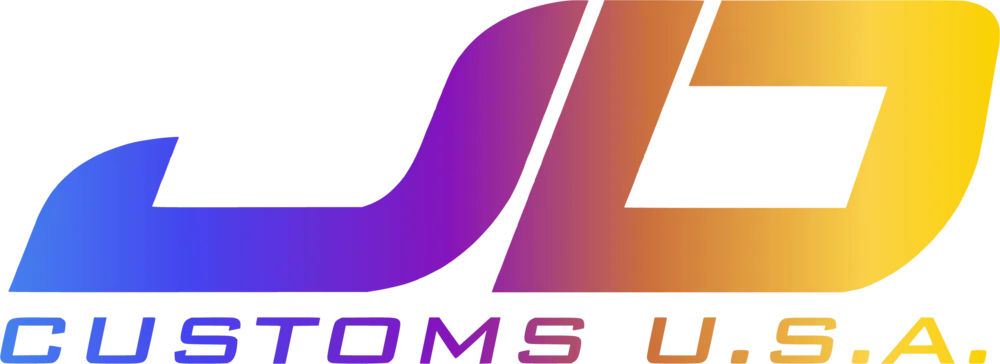




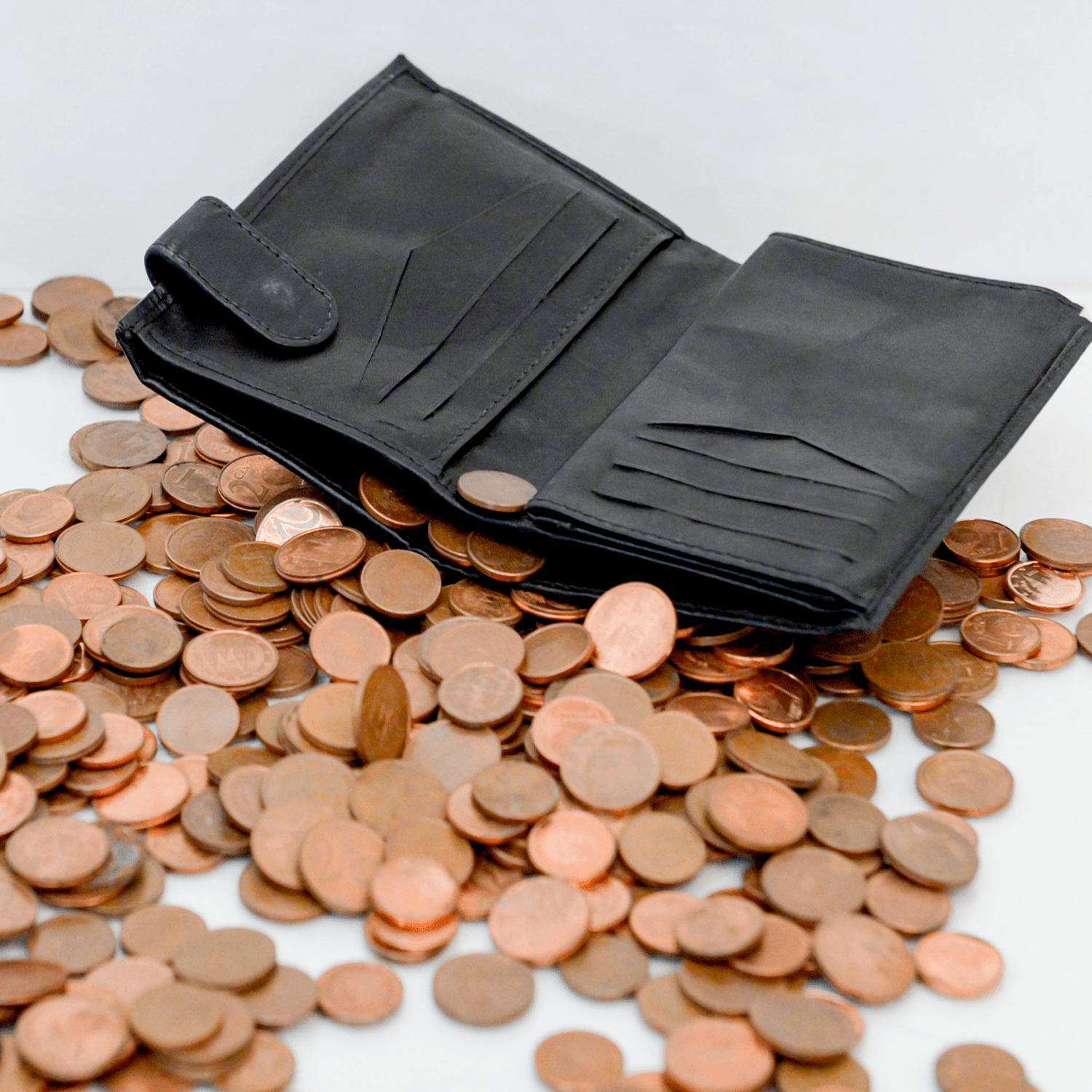
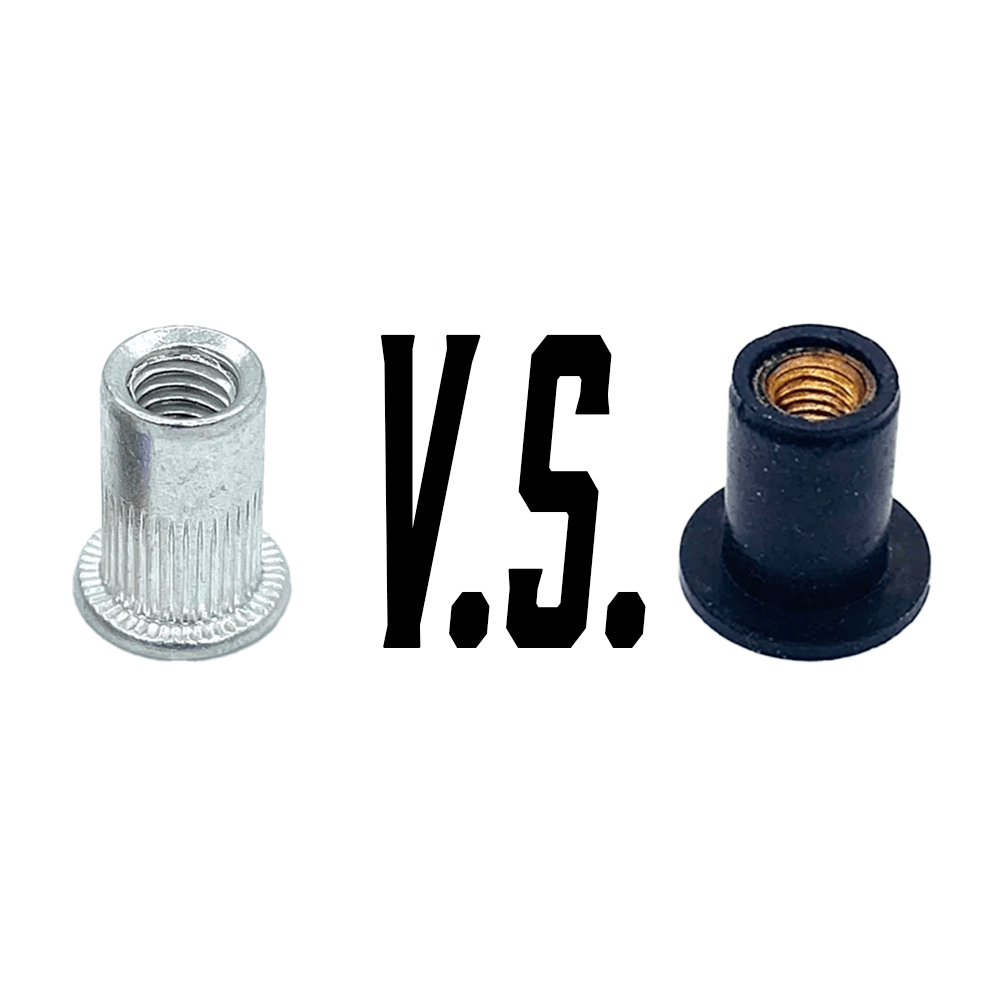
Share:
Best Carbon Fiber Upgrades for Nissan 370Z
JDC’s Guide to Wheel Customization: Upgrade Your Wheels Without Replacing Them